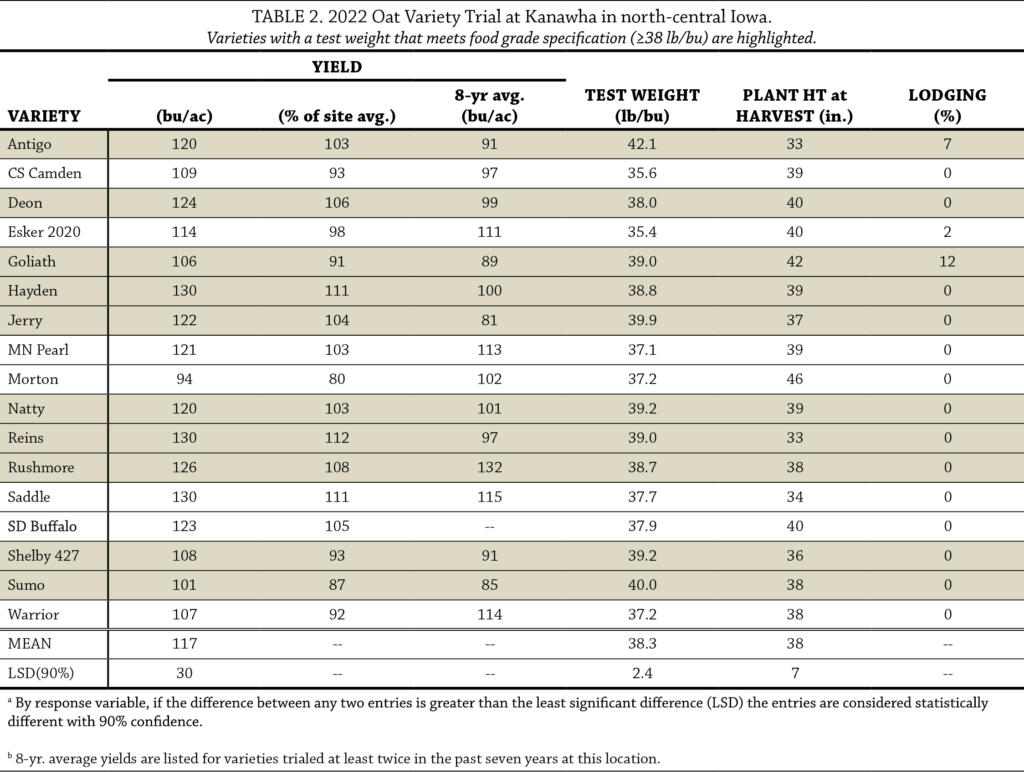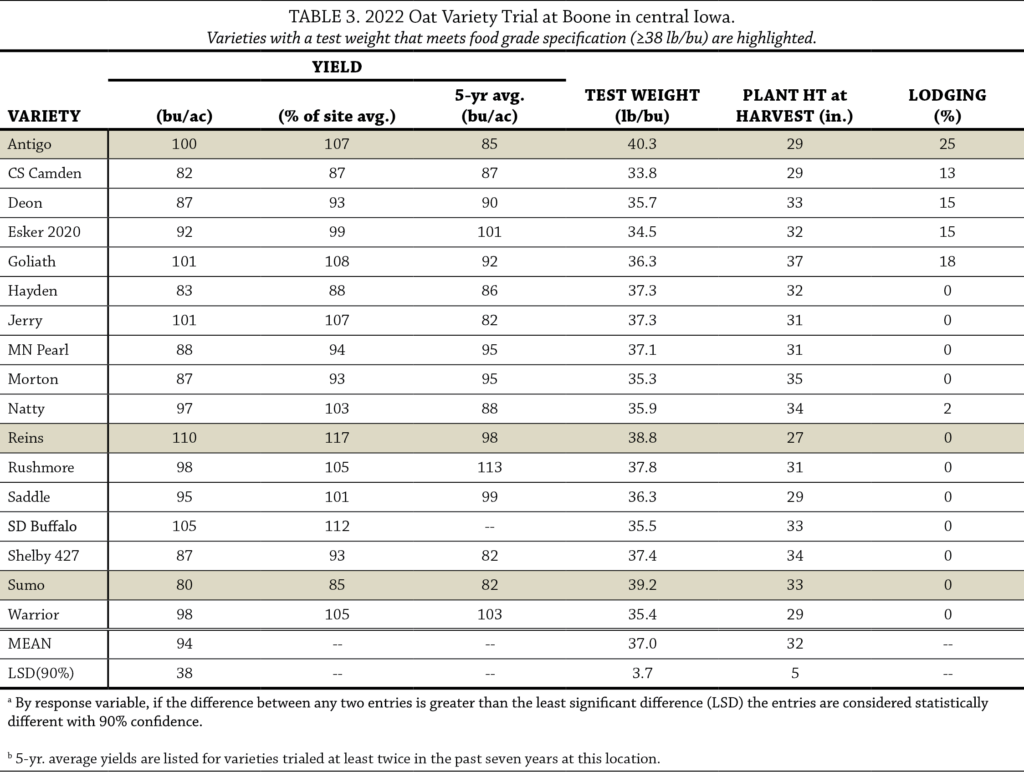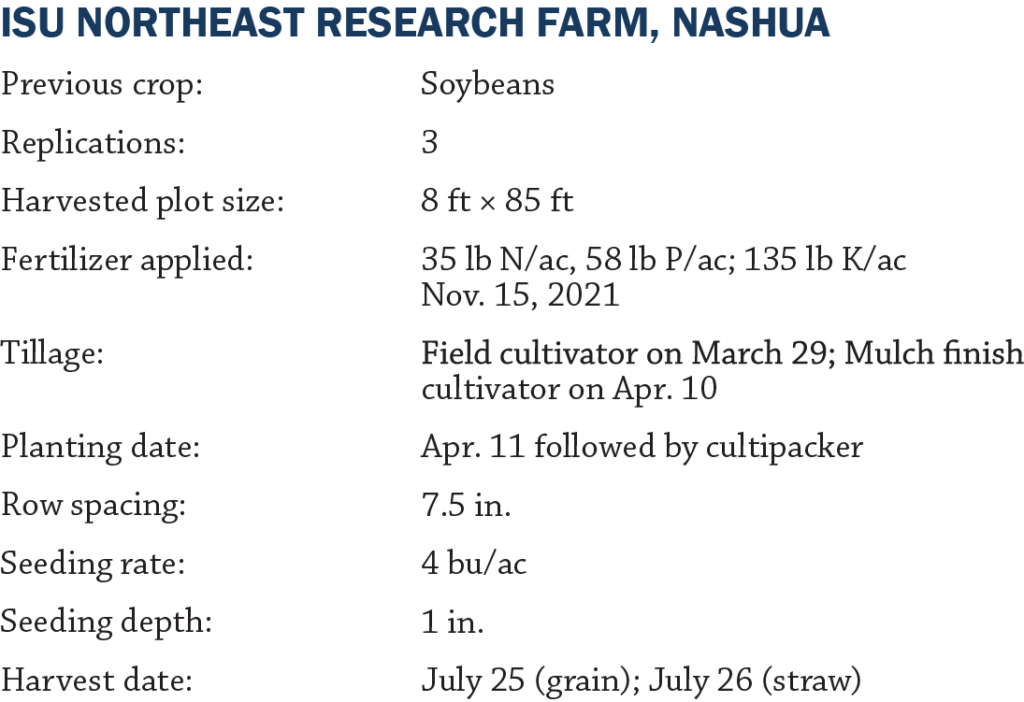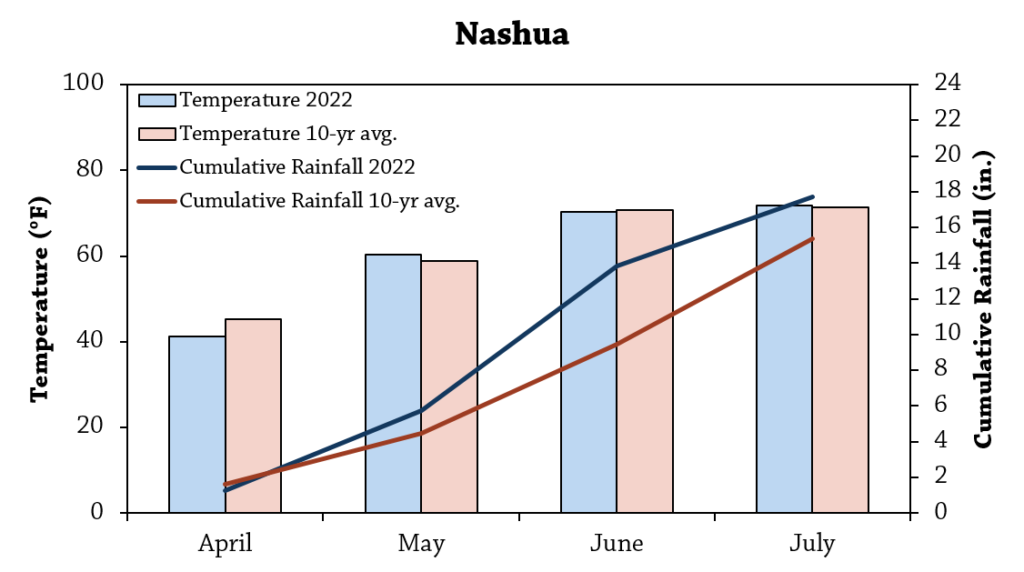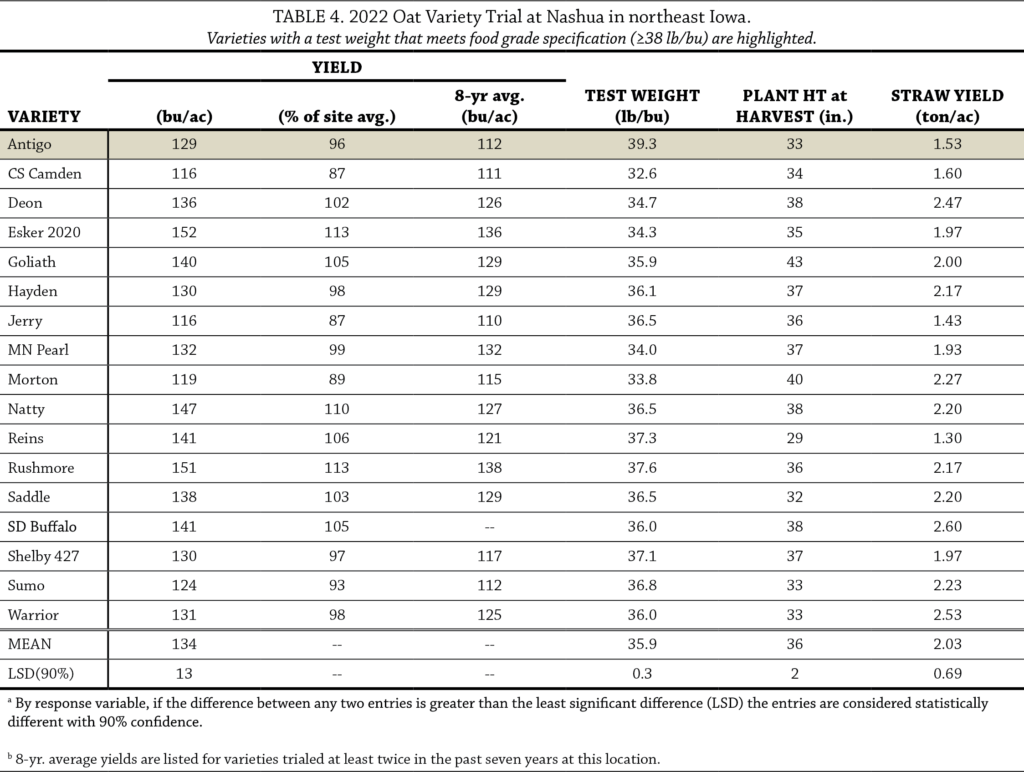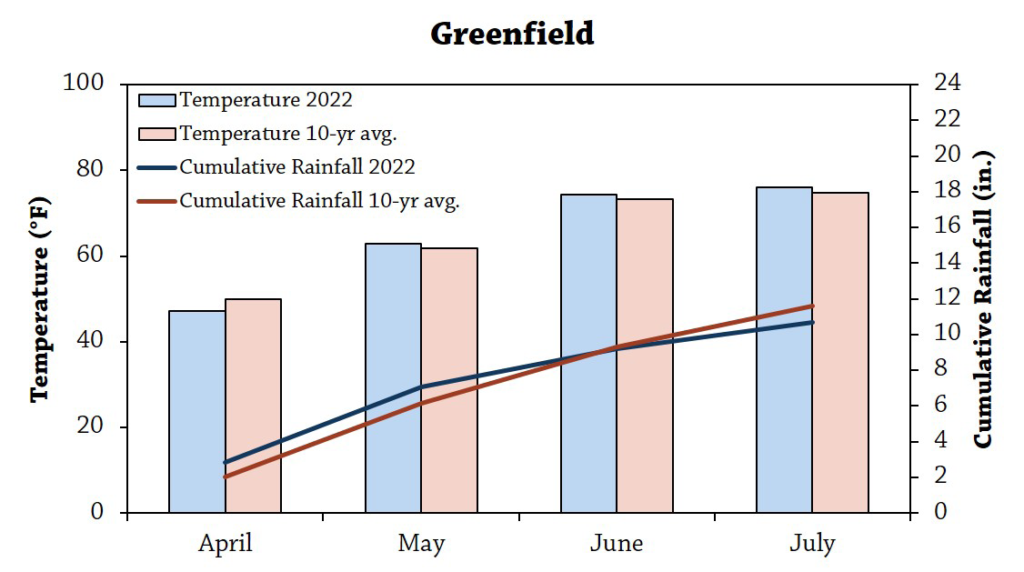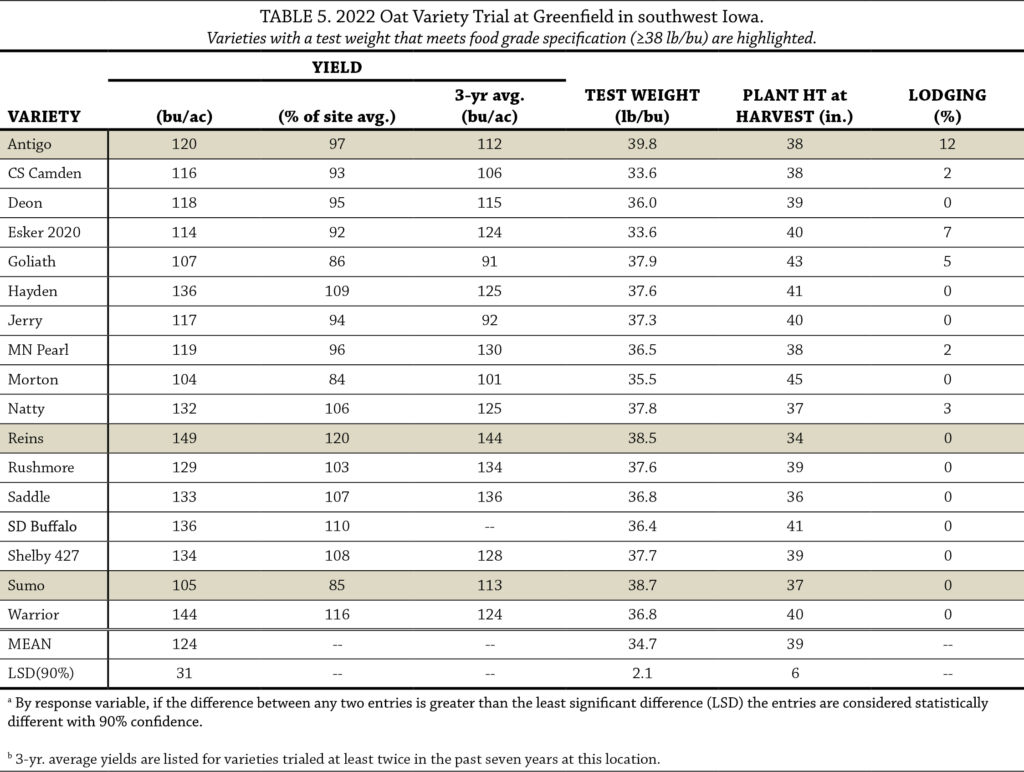This research was funded by USDA-NIFA, Walton Family Foundation, Albert Lea Seed House, Welter Seed and Honey Co., Meridian Seeds, SDSU Seed Foundation and Zabel Seeds.
In a Nutshell:
- 17 oat varieties were screened at four Iowa State University research farms.
Key Findings:
- Across varieties and sites, average oat yield was 117 bu/ac.
- Antigo was the only variety to score a test weight ≥38 lb/bu (food grade) at each location; Reins and Sumo scored test weights ≥38 lb/bu at three of four locations.
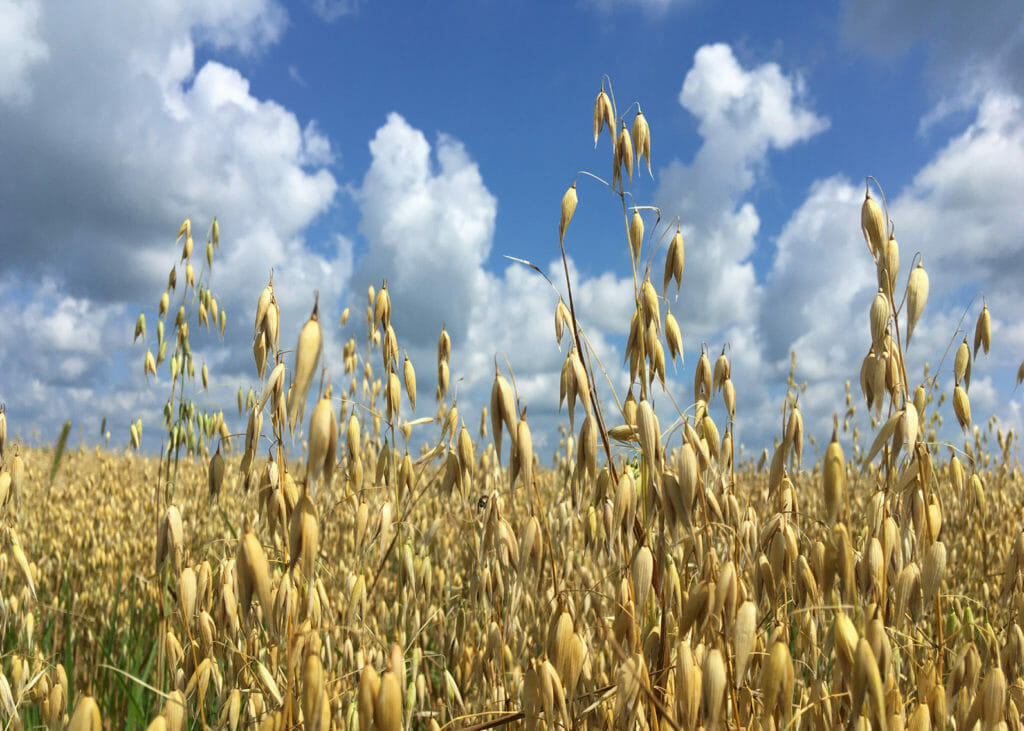
Oats at Boone on July 17, 2022.
Background
In 2022, 120,000 acres of oats were planted in Iowa according to the USDA-National Agricultural Statistics Service; down from 180,000 acres in 2021. The state average yield for the year was 70 bu/ac; the five-year average yield is 69 bu/ac.[1]
Methods
Variety trials were conducted at four locations in 2022: ISU Northern Research Farm in Kanawha; ISU Ag Engineering and Agronomy Farm in Boone; ISU Northeast Research Farm in Nashua; ISU Southwest Research Farm in Greenfield. These variety trials build on previous trials conducted at Kanawha, Charles City, Boone, Nashua and Greenfield from 2015¬–2021.[2–8] Information about each of the varieties trialed in 2022 can be found in Table 1.
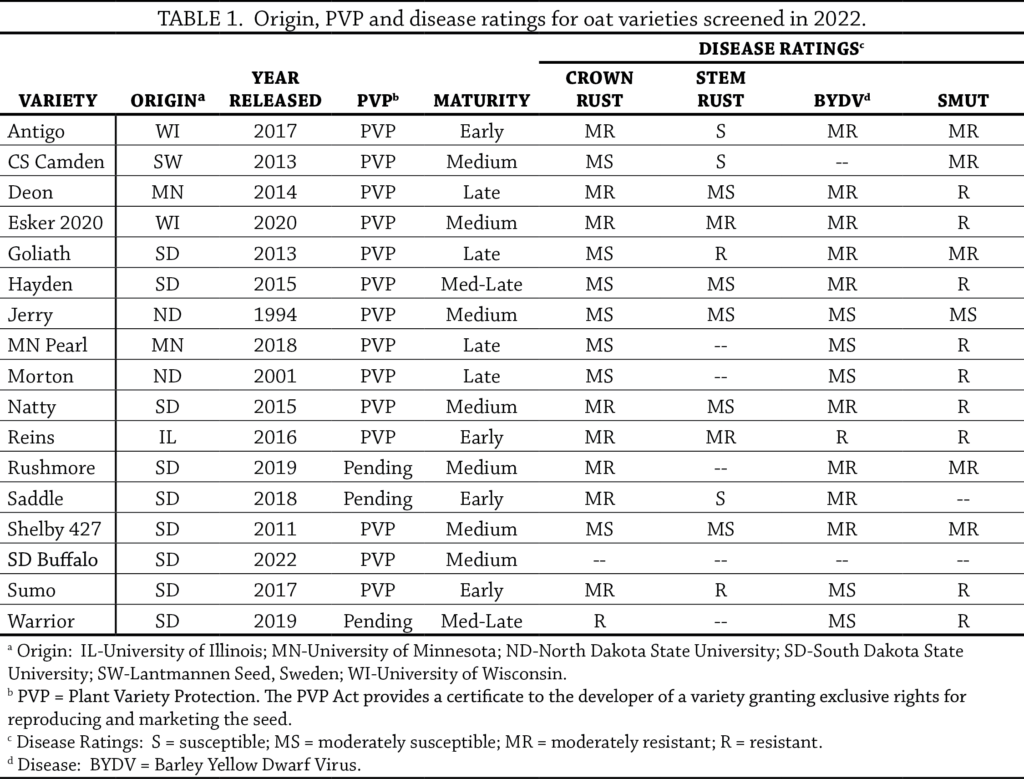
Oat management information is provided with the results from each location. No herbicides or insecticides were applied at any location. Statistical significance is determined at 90% confidence level and means separations are reported using Tukey’s least significant difference (LSD).
Results and Discussion
Data were analyzed by location, and varieties are listed in alphabetical order at each location. Reported yields are corrected for 13% moisture. A “percentage of test average” calculation is included to aid in comparing varieties at each location. Rainfall and temperature data were accessed from the nearest weather station.[9] Rainfall in 2022 was above historical averages at Kanawha and Nashua.
Ten varieties at Kanawha and three varieties at Boone and Greenfield made a test weight of 38 lb/bu – the standard minimum that many food companies require before dockage is applied. At Nashua, only Antigo made test weight ≥38 lb/bu. A test weight of 36 lb/bu is a minimum processing facilities can use for food-grade milling and several varieties at each location made this test weight.
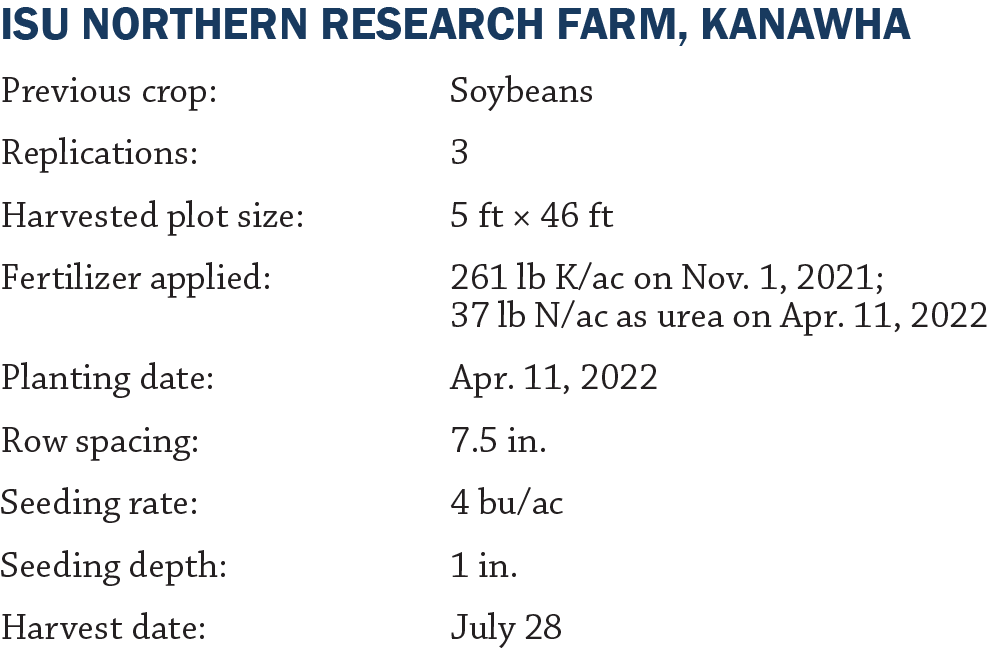
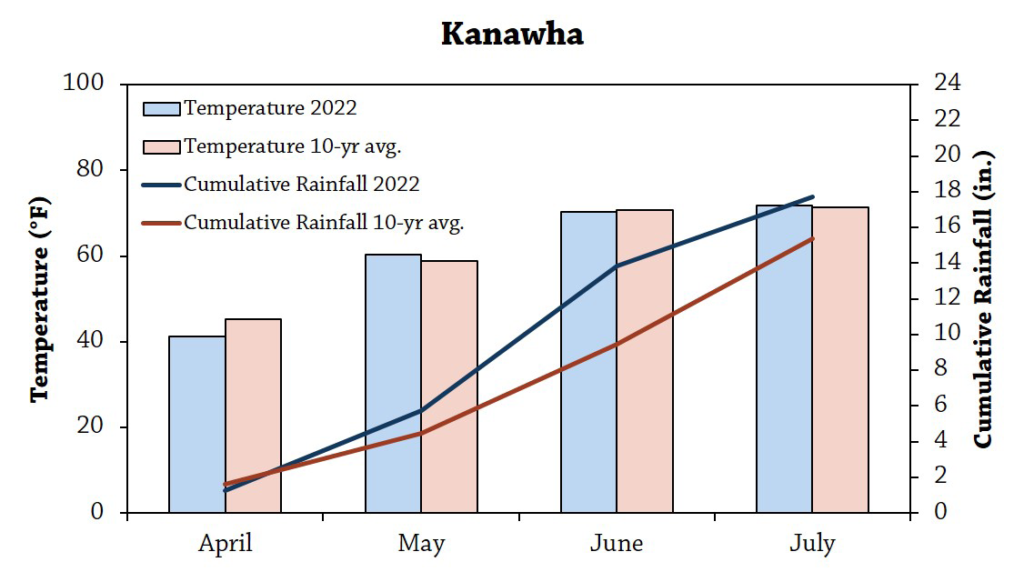
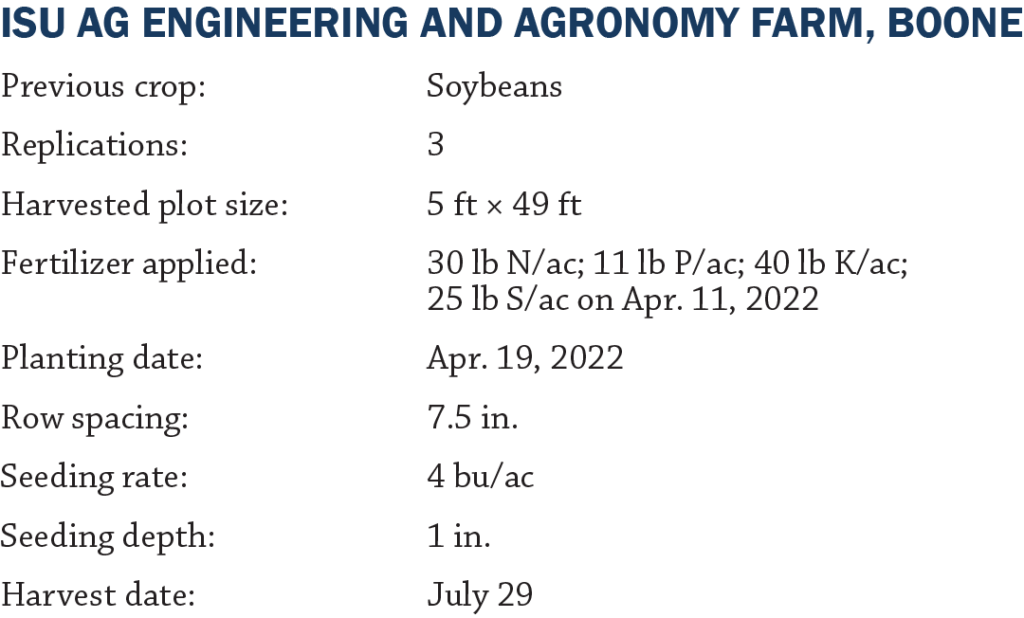
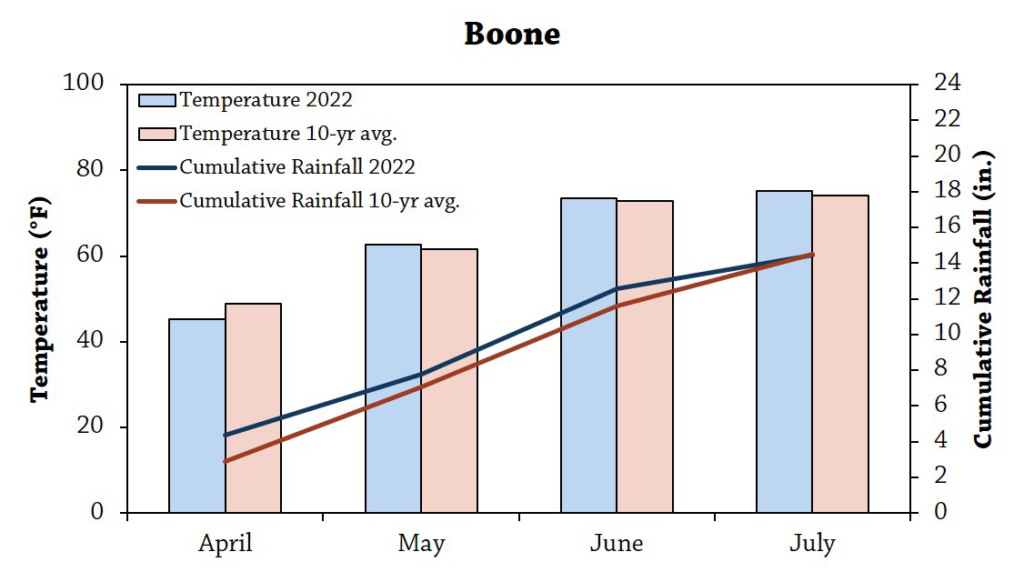
Funding Acknowledgement
This work is supported by the Agriculture and Food Research Initiative, grant number F9000315202081 from the USDA National Institute of Food and Agriculture. Any opinions, findings, conclusions, or recommendations expressed in this publication are those of the author(s) and do not necessarily reflect the views of the U.S. Department of Agriculture.
References
- US Department of Agriculture-National Agricultural Statistics Service. Quick stats. USDA-National Agricultural Statistics Service. https://quickstats.nass.usda.gov/ (accessed September 2022).
- Gailans, S., S. Carlson, K. Pecinovsky and B. Lang. 2015. Oat Variety and Fungicide Trials. Practical Farmers of Iowa Cooperators’ Program. https://practicalfarmers.org/research/oat-variety-and-fungicide-trials/ (accessed September 2022).
- Gailans, S., S. Carlson, M. Schnabel, K. Pecinovsky, B. Lang and W. Johnson. 2016. Oat Variety Trials 2016. Practical Farmers of Iowa Cooperators’ Program. https://practicalfarmers.org/research/oat-variety-trials-2016/ (accessed September 2022).
- Gailans, S., S. Carlson, M. Schnabel, K. Pecinovsky, B. Lang and W. Koehler. 2017. Oat Variety and Fungicide Trials 2017. Practical Farmers of Iowa Cooperators’ Program. https://practicalfarmers.org/research/oat-variety-and-fungicide-trials-2017/ (accessed September 2022).
- Gailans, S., S. Carlson, M. Schnabel, K. Pecinovsky and W. Johnson. 2018. Oat Variety Trial 2018. Practical Farmers of Iowa Cooperators’ Program. https://practicalfarmers.org/research/oat-variety-trial-2018/ (accessed September 2022).
- Gailans, S., S. Carlson, M. Schnabel, K. Pecinovsky and W. Koehler. 2019. Oat Variety Trial 2019. Practical Farmers of Iowa Cooperators’ Program. https://practicalfarmers.org/wp-content/uploads/2019/12/PFI2019_ResearchReport_Oat-Variety-Trial.pdf (accessed September 2022).
- Gailans, S., L. English, M. Schnabel, K. Pecinovsky, D. Maxwell, R. Rosmann and M. Smith. 2020. Oat Variety Trial 2020. Practical Farmers of Iowa Cooperators’ Program. https://practicalfarmers.org/research/oat-variety-trial-2020/ (accessed September 2022).
- Gailans, S. and L. English. 2021. Oat Variety Trial 2021. Practical Farmers of Iowa Cooperators’ Program. https://practicalfarmers.org/research/oat-variety-trial-2021/ (accessed September 2022).
- Iowa Environmental Mesonet. 2022. Climodat Reports. Iowa State University. http://mesonet.agron.iastate.edu/climodat/ (accessed September 2022).


